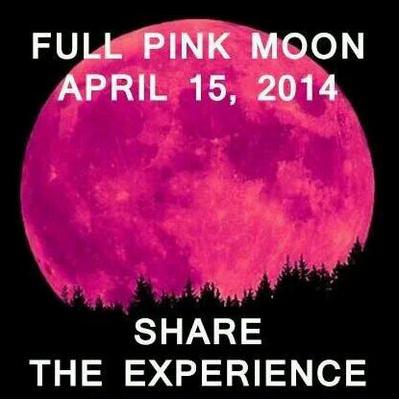Claim: A "full pink moon" will be visible on 15 April 2014.
Example: [Collected via Facebook, March 2014]
Is this Facebook post true? A "full pink moon" on

Origins: March 2014 saw the introduction of this social media posting promoting the upcoming occurrence of a "full pink moon" on
As noted in the Farmer's Almanac, some Native American tribes assigned unique names to full moons based upon the time of year in which they took place as a method of tracking the passage of seasons:
The early Native Americans did not record time by using the months of the Julian or Gregorian calendar. Many tribes kept track of time by observing the seasons and lunar months, although there was much variability. For some tribes, the year contained 4 seasons and started at a certain season, such as spring or fall. Others counted Each tribe that did name the full Moons (and/or lunar months) had its own naming preferences. Some would use Colonial Americans adopted some of the Native American full Moon names and applied them to their own calendar system (primarily Julian, and later, Gregorian).
Native Americans full Moon names were created to help different tribes track the seasons. Think of it as a "nickname" for the Moon!
As noted above, the nomenclature used for various full moons was not standardized and varied from tribe to tribe, but the Algonquin tribes (who lived in regions from New England to Lake Superior) identified a full moon occurring in April as a "Pink Moon" not because of its color, but due to its coinciding with the first appearance of the moss pink flowering plant (Phlox subulata, also known as creeping phlox, moss phlox, wild ground phlox, or mountain phlox), a harbinger of Spring:
This full Moon heralded the appearance of the moss pink, or wild ground phlox — one of the first spring flowers. It is also known as the Sprouting Grass Moon, the Egg Moon, and the Fish Moon.
Technically the term "Pink Moon" refers to the full moon that will be visible throughout most of the week of April
"a dramatically colorful appearance, ranging from bright orange to blood red." April's "Pink Moon" is also the Paschal Full Moon that determines the date of Easter.
Last updated: 31 March 2014
